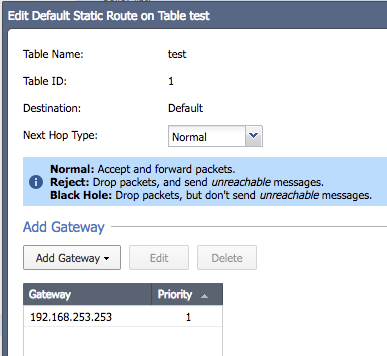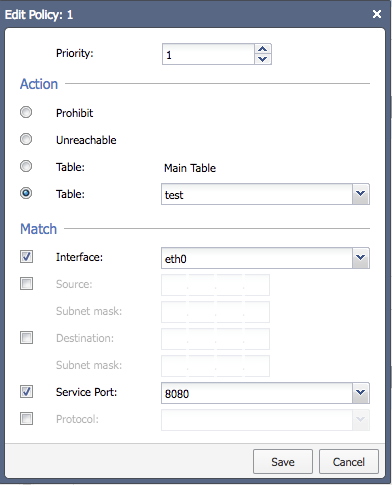- Products
Network & SASE IoT Protect Maestro Management OpenTelemetry/Skyline Remote Access VPN SASE SD-WAN Security Gateways SmartMove Smart-1 Cloud SMB Gateways (Spark) Threat PreventionCloud Cloud Network Security CloudMates General CloudGuard - WAF Talking Cloud Podcast Weekly ReportsSecurity Operations Events External Risk Management Incident Response Infinity AI Infinity Portal NDR Playblocks SOC XDR/XPR Threat Exposure Management
- Learn
- Local User Groups
- Partners
- More
This website uses Cookies. Click Accept to agree to our website's cookie use as described in our Privacy Policy. Click Preferences to customize your cookie settings.
- Products
- AI Security
- Developers & More
- Check Point Trivia
- CheckMates Toolbox
- General Topics
- Products Announcements
- Threat Prevention Blog
- Upcoming Events
- Americas
- EMEA
- Czech Republic and Slovakia
- Denmark
- Netherlands
- Germany
- Sweden
- United Kingdom and Ireland
- France
- Spain
- Norway
- Ukraine
- Baltics and Finland
- Greece
- Portugal
- Austria
- Kazakhstan and CIS
- Switzerland
- Romania
- Turkey
- Belarus
- Belgium & Luxembourg
- Russia
- Poland
- Georgia
- DACH - Germany, Austria and Switzerland
- Iberia
- Africa
- Adriatics Region
- Eastern Africa
- Israel
- Nordics
- Middle East and Africa
- Balkans
- Italy
- Bulgaria
- Cyprus
- APAC
CheckMates Fest 2026
Join the Celebration!
AI Security Masters
E1: How AI is Reshaping Our World
MVP 2026: Submissions
Are Now Open!
What's New in R82.10?
Watch NowOverlap in Security Validation
Help us to understand your needs better
CheckMates Go:
Maestro Madness
Turn on suggestions
Auto-suggest helps you quickly narrow down your search results by suggesting possible matches as you type.
Showing results for
- CheckMates
- :
- Products
- :
- Network & SASE
- :
- Security Gateways
- :
- Re: Directing specific ports traffic to second ISP...
Options
- Subscribe to RSS Feed
- Mark Topic as New
- Mark Topic as Read
- Float this Topic for Current User
- Bookmark
- Subscribe
- Mute
- Printer Friendly Page
Turn on suggestions
Auto-suggest helps you quickly narrow down your search results by suggesting possible matches as you type.
Showing results for
Are you a member of CheckMates?
×
Sign in with your Check Point UserCenter/PartnerMap account to access more great content and get a chance to win some Apple AirPods! If you don't have an account, create one now for free!
- Mark as New
- Bookmark
- Subscribe
- Mute
- Subscribe to RSS Feed
- Permalink
- Report Inappropriate Content
Jump to solution
Directing specific ports traffic to second ISP interface
On a 5100 R80.10, need to direct all outbound traffic on port TCP/80 to a second ISP interface.
Already checked:
- ISP redundancy (no port control, even on load-balancing)
- Policy Based Routing (cannot define the general destination 0.0.0.0/0.0.0.0 on any rule)
Did any one found any solution or workaround to this?
1 Solution
Accepted Solutions
- Mark as New
- Bookmark
- Subscribe
- Mute
- Subscribe to RSS Feed
- Permalink
- Report Inappropriate Content
Subnetting the Internet was just me being creative. ![]()
I did ask R&D and the official answer is to create a rule that specifies both the inbound interface and TCP port 80.
Just specifying the TCP port isn't sufficient.
When you do that, you can use a default route as the destination.
6 Replies
- Mark as New
- Bookmark
- Subscribe
- Mute
- Subscribe to RSS Feed
- Permalink
- Report Inappropriate Content
Instead of trying to do a 0.0.0.0, you might try breaking the Policy-Based Routes into a series of smaller routes, such as:
- 0.0.0.0/1
- 128.0.0.0/2
- 192.0.0.0/3
That should cover anything routable via IPv4 on the Internet (and some stuff that isn't).
- Mark as New
- Bookmark
- Subscribe
- Mute
- Subscribe to RSS Feed
- Permalink
- Report Inappropriate Content
So, subnetting the Internet is the answer.
Please don't get me wrong, I appreciate your suggestion as a great workaround - wish I had thought of it before.
But, having used Checkpoint in the late 90's and now again since June 2017, I'm continuously amazed by these "limitations" that keep appearing that have been already addressed by other manufacturers I have worked with in the past (Cisco, Fortinet...). Why Checkopint won't use something that was devised specifically for these situations ("quad-zero route" or "gateway of last resort") continuously amazes me.
Thanks again Dameon.
- Mark as New
- Bookmark
- Subscribe
- Mute
- Subscribe to RSS Feed
- Permalink
- Report Inappropriate Content
Subnetting the Internet was just me being creative. ![]()
I did ask R&D and the official answer is to create a rule that specifies both the inbound interface and TCP port 80.
Just specifying the TCP port isn't sufficient.
When you do that, you can use a default route as the destination.
- Mark as New
- Bookmark
- Subscribe
- Mute
- Subscribe to RSS Feed
- Permalink
- Report Inappropriate Content
Creative indeed. I had in fact tried several combinations on PBR including specifying the inbound interface and port, and PBR works pretty well on specific subnets. My question was on the quad-zero route and how to specify it as the interface disallows it.
Time to get a good IP calculator and work my way around 10.0.0.0/8, 192.168.0.0/16...
- Mark as New
- Bookmark
- Subscribe
- Mute
- Subscribe to RSS Feed
- Permalink
- Report Inappropriate Content
I think I was able to do it without subneting.
As a test, I routed port 8080 out a different interface.
I confirmed a TCP connection to port 8080 to some random Internet host was indeed routing out the specified interface.
It looks like this in the Gaia WebUI:

The "test" route was created like this:
(Note, I clicked the "default" here, but the IP here is most definitely not my default route)

The policy rule looks like this:

Hope that helps.
- Mark as New
- Bookmark
- Subscribe
- Mute
- Subscribe to RSS Feed
- Permalink
- Report Inappropriate Content
Now, that's an elegant solution. Somehow I understood "default route" as "default gateway" and not by face value. I can confirm it does work, although the requests are being NAT'ed, which I think they shouldn't. But the main issue of service routing is accomplished, thank you.
And, of course, my previous rant on Checkpoint is meaningless now ![]()
Leaderboard
Epsum factorial non deposit quid pro quo hic escorol.
| User | Count |
|---|---|
| 21 | |
| 17 | |
| 11 | |
| 8 | |
| 7 | |
| 4 | |
| 3 | |
| 3 | |
| 3 | |
| 3 |
Upcoming Events
Thu 08 Jan 2026 @ 05:00 PM (CET)
AI Security Masters Session 1: How AI is Reshaping Our WorldThu 22 Jan 2026 @ 05:00 PM (CET)
AI Security Masters Session 2: Hacking with AI: The Dark Side of InnovationThu 12 Feb 2026 @ 05:00 PM (CET)
AI Security Masters Session 3: Exposing AI Vulnerabilities: CP<R> Latest Security FindingsThu 26 Feb 2026 @ 05:00 PM (CET)
AI Security Masters Session 4: Powering Prevention: The AI Driving Check Point’s ThreatCloudThu 08 Jan 2026 @ 05:00 PM (CET)
AI Security Masters Session 1: How AI is Reshaping Our WorldThu 22 Jan 2026 @ 05:00 PM (CET)
AI Security Masters Session 2: Hacking with AI: The Dark Side of InnovationThu 26 Feb 2026 @ 05:00 PM (CET)
AI Security Masters Session 4: Powering Prevention: The AI Driving Check Point’s ThreatCloudAbout CheckMates
Learn Check Point
Advanced Learning
YOU DESERVE THE BEST SECURITY
©1994-2025 Check Point Software Technologies Ltd. All rights reserved.
Copyright
Privacy Policy
About Us
UserCenter


